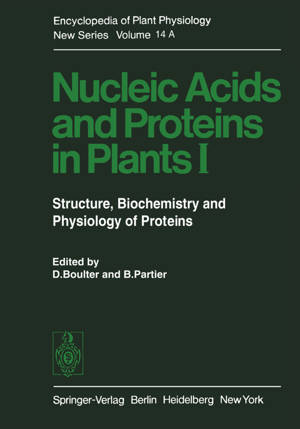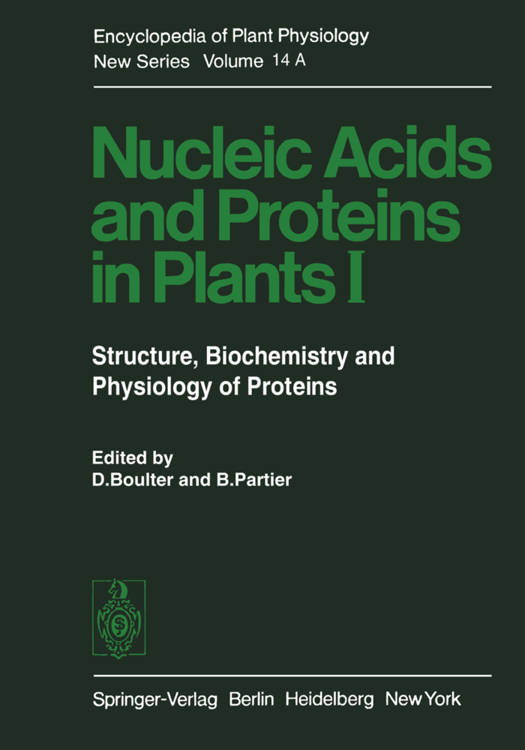
- Afhalen na 1 uur in een winkel met voorraad
- Gratis thuislevering in België vanaf € 30
- Ruim aanbod met 7 miljoen producten
- Afhalen na 1 uur in een winkel met voorraad
- Gratis thuislevering in België vanaf € 30
- Ruim aanbod met 7 miljoen producten
Zoeken
Nucleic Acids and Proteins in Plants I
Structure, Biochemistry and Physiology of Proteins
Paperback | Engels | Encyclopedia of Plant Physiology | Nucleic Acids and Proteins in Plants | nr. 14
€ 184,79
+ 369 punten
Omschrijving
D. BOULTER and B. PARTHIER At the time of the former edition of the Encyclopedia of Plant Physiology, approximately 25 years ago, no complete plant protein amino acid sequences or nucleic acid sequences had been determined. Although the structure of DNA and its function as the genetic material had just been reported, little detail was known of the mechanism of its action, and D. G. CATCHSIDE was to write in the first chapter of the first volume of the Encyclopedia: "There is a consider- able body of evidence that the gene acts as a unit of physiological action through the control of individual enzymes". No cell-free transcription and pro- tein-synthesizing systems were available and the whole range of powerful meth- ods of recombinant DNA technology was still to be developed. Today for the first time with plant systems, it is possible not only to describe their molecular biology but also to manipulate it, i. e., to move from a description to a technological phase. The properties of living systems are inscribed by those of the proteins and nucleic acids which they synthesize. Proteins, due to their very large size, occur as macromolecules in colloidal solution or associated in supra-molecular colloi- dal form. The colloidal state confers low thermal conductivity, low diffusion coefficients and high viscosity, properties which buffer a biological system from the effects of a changing environment. Biological systems not only have great stability, but also the capacity to reproduce.
Specificaties
Betrokkenen
- Uitgeverij:
Inhoud
- Aantal bladzijden:
- 770
- Taal:
- Engels
- Reeks:
- Reeksnummer:
- nr. 14
Eigenschappen
- Productcode (EAN):
- 9783642682391
- Verschijningsdatum:
- 18/11/2011
- Uitvoering:
- Paperback
- Formaat:
- Trade paperback (VS)
- Afmetingen:
- 170 mm x 244 mm
- Gewicht:
- 1238 g

Alleen bij Standaard Boekhandel
+ 369 punten op je klantenkaart van Standaard Boekhandel
Beoordelingen
We publiceren alleen reviews die voldoen aan de voorwaarden voor reviews. Bekijk onze voorwaarden voor reviews.







